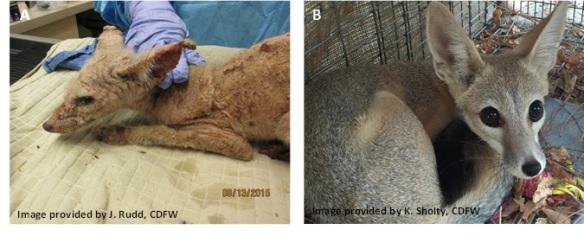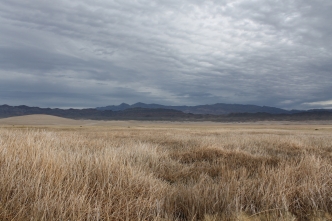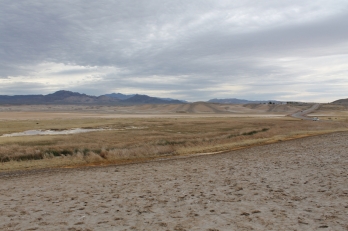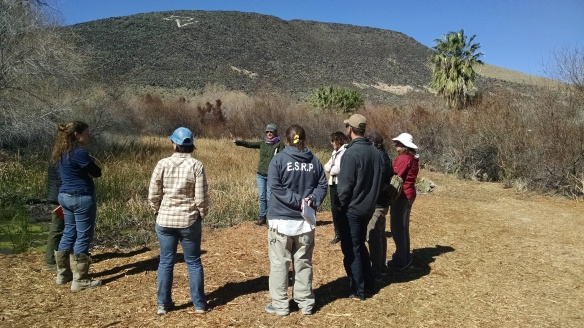
WIL staff and partners assessing the recent habitat restoration efforts. Photo credit: Austin Roy (CDFW)
WIL and our partners at USFWS, UC Davis, CDFW-Region 6, BLM, Amargosa Conservancy, and Shoshone Village are continuing to restore historic vole habitat in Shoshone, CA. The Amargosa vole was first discovered in Shoshone in the late 1800s, but a myriad of habitat changes resulted in its local extinction from the northern part of its range.

A recently installed interpretive sign explains the restoration project to visitors and local community members. Photo credit: Deana Clifford (CDFW)
Over the past year non-native vegetation was cleared, soil was contoured and irrigation installed in select areas to more evenly distribute water throughout the fledgling marsh. The team’s goal was to have a light touch on the land and let the marsh do much of the work regenerating itself.
The beginnings of a marsh capable of becoming vole habitat are appearing!
This restoration project is made possible due to the dedication of local private landowners, volunteers and a community nonprofit. The effort is funded by a Traditional Section 6 grant and a Partners for Fish and Wildlife grant through the USFWS, funds from CDFW WIL and private matching funds. Once the marsh is fully restored, we hope to bring voles back to Shoshone and create a new population of voles which will aid in reducing the chance of this species becoming extinct.
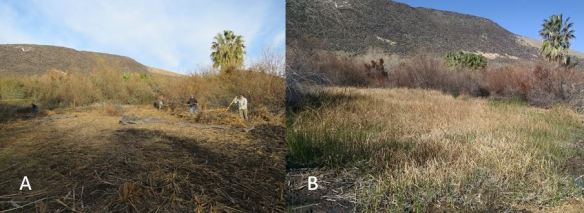
An example of what the marsh looked like during (a) and after (b) initial habitat restoration efforts. Photo credit: Tanya Henderson (Amargosa Conservancy) and Austin Roy (CDFW)

